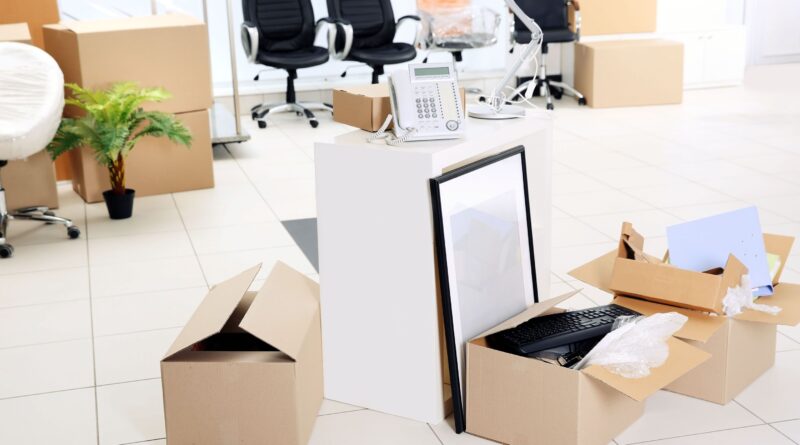Office Removals in Romford: a Comprehensive Guide
Office removals can be difficult for any business, especially when maintaining efficiency and keeping up with important meetings. If your company plans to do Office Removals in Romford, it’s vital to have a strategy to ensure that meetings can endure flawlessly without disrupting the moving process. This guide will walk you through operative steps to schedule and manage meetings during office removals, helping your business stay on track.
Understand the Scope and Timeline of the Office Move
Before you start scheduling meetings, it’s essential to have a clear understanding of the office removal process. Consider the following:
Timeline:
When is the move happening, and how long will it take? Knowing the exact dates and duration will help you avoid scheduling conflicts.
Phases of the Move:
Break down the office removal into packing, moving, and unpacking phases. Identify the critical periods where the move might disrupt normal operations.
Key Personnel:
Identify which team members will be directly involved in the move and may be unavailable for meetings.
A detailed plan of the move will allow you to schedule meetings around the most disruptive periods, ensuring minimal impact on business operations.
Prioritise Meetings
Not all meetings are created equal. During an office removal, it’s essential to prioritise meetings based on their importance and urgency:
High-Priority Meetings:
These include client meetings, project deadlines, and essential internal discussions that cannot be postponed. Ensure these are scheduled well before or after the critical phases of the move.
Medium-Priority Meetings:
These are significant but can be rearranged if needed. Consider holding these meetings virtually or off-site if the office environment is too disrupted.
Low-Priority Meetings:
Routine check-ins or non-urgent meetings can often be postponed or replaced with email updates until the office move is complete.
By categorising your meetings, you can focus on what needs to happen during the move and what can wait.
Leverage Technology
Virtual Meetings:
Platforms like Zoom, Microsoft Teams, and Google Meet allow you to hold meetings without being physically present in the office. It would be truly beneficial if your team were spotted during the move.
Calendar Tools:
Use shared calendar tools like Google Calendar or Outlook to inform everyone about meeting schedules. Set reminders and mark any changes due to the move.
Project Management Software:
Tools like Trello, Asana, or Slack can help you manage tasks and communicate effectively, ensuring everyone is on the same page.
Communicate Clearly with All Stakeholders
Internal Communication:
Notify your team in advance about the details of the move. Share the timeline, key dates, and any potential disruptions. Encourage team members to flag any critical meetings that might be affected.
Client Communication:
Notify clients about your office move and reassure them that business operations, including meetings, will continue as usual. Please provide them with alternative contact methods during the move.
Vendors and Partners:
Ensure that all external partners are aware of your move. This is particularly important if they are involved in your scheduled meetings.
Consider Off-Site Meeting Locations
During the peak days of the move, your office might not be the best place to hold meetings. Consider the following alternatives:
Co-Working Spaces:
Romford has several co-working spaces where you can rent a meeting room for a few hours. These spaces have the necessary technology and can provide a quiet environment for important discussions.
Client Offices:
If you have a strong relationship with a client, consider holding meetings at their office during the move. This can also strengthen your business relationship.
Hotels and Conference Centers:
Many hotels offer business meeting rooms that can be rented for short periods. These are ideal for larger meetings or when you need a professional setting.
Off-site locations provide a temporary solution for maintaining professionalism and minimising disruptions during the office move.
Create an Emergency Plan
No matter how well you plan, unexpected issues can arise during an office move. To mitigate potential problems:
Backup Technology:
Ensure you have backup devices (laptops, mobile hotspots) in case of internet issues during the move.
Alternative Contacts:
Provide clients and team members with alternative contact methods (personal mobile numbers, temporary email addresses) in case office lines are down.
Flexible Scheduling:
Build flexibility into your meeting schedule, allowing for quick rescheduling if necessary.
A contingency plan ensures that your meetings and business operations can continue without disruption, even if something goes wrong.
Conclusion:
Scheduling meetings during Office Removals in Beckton requires careful planning, clear communication, and modern technology. By understanding the scope of the move, prioritising meetings, and considering off-site options, you can ensure that your business remains productive and that critical meetings are not disrupted. With the right strategy, your office move can be a smooth transition with minimal impact on your day-to-day operations.
Read More Blogs: Techy Businesses

